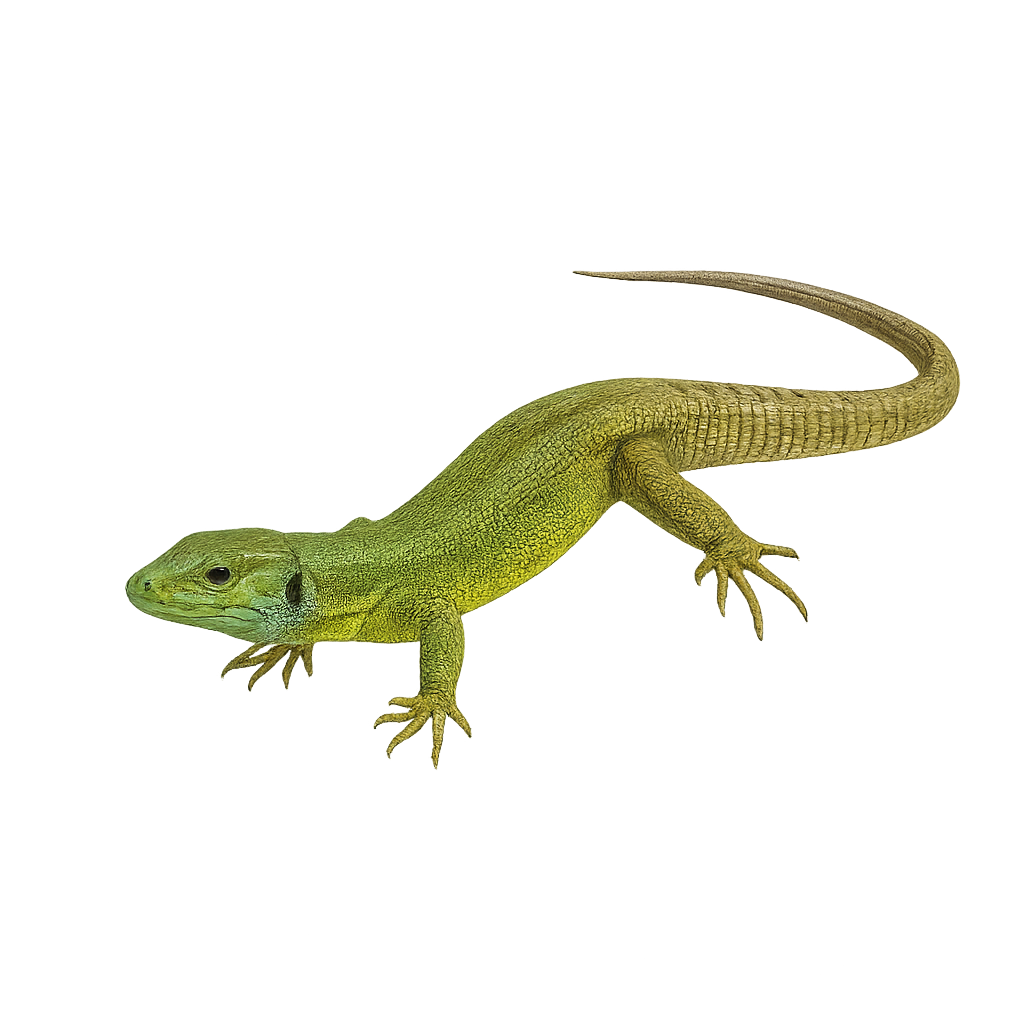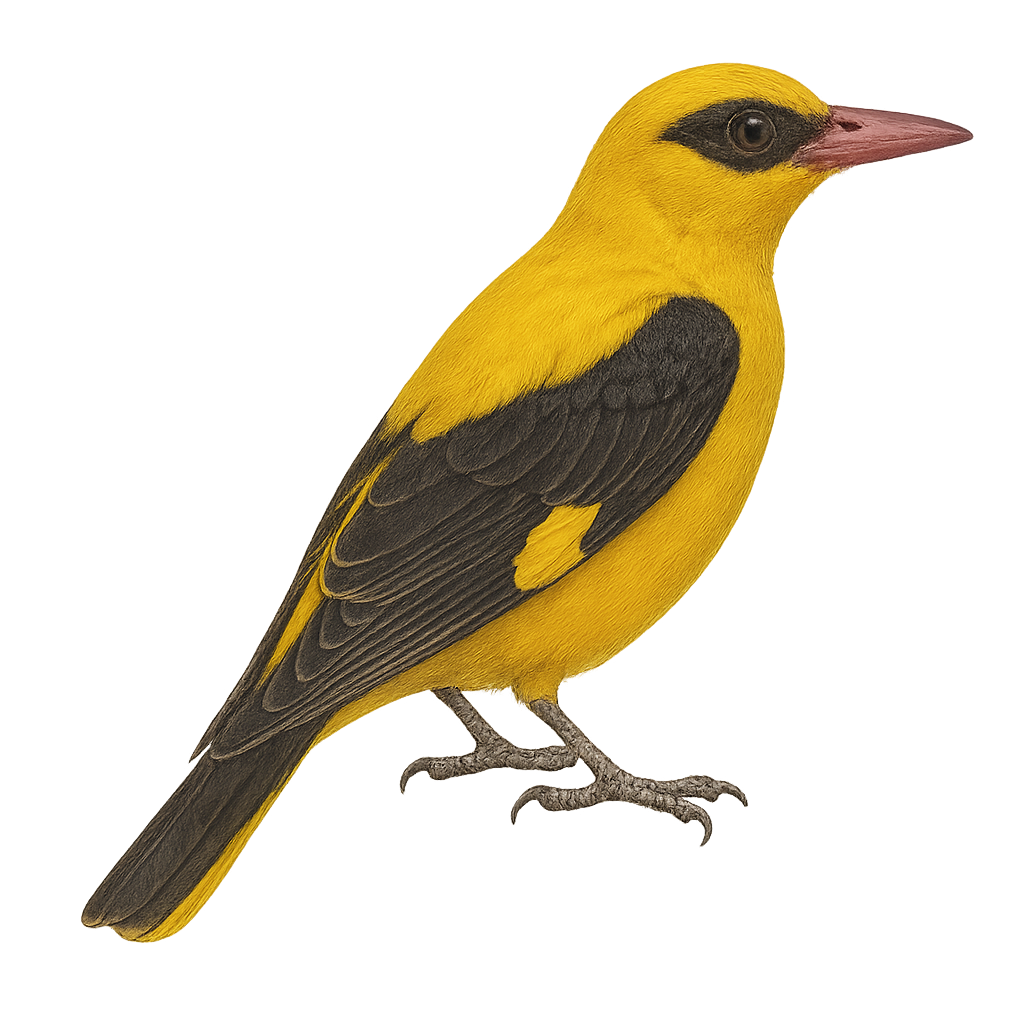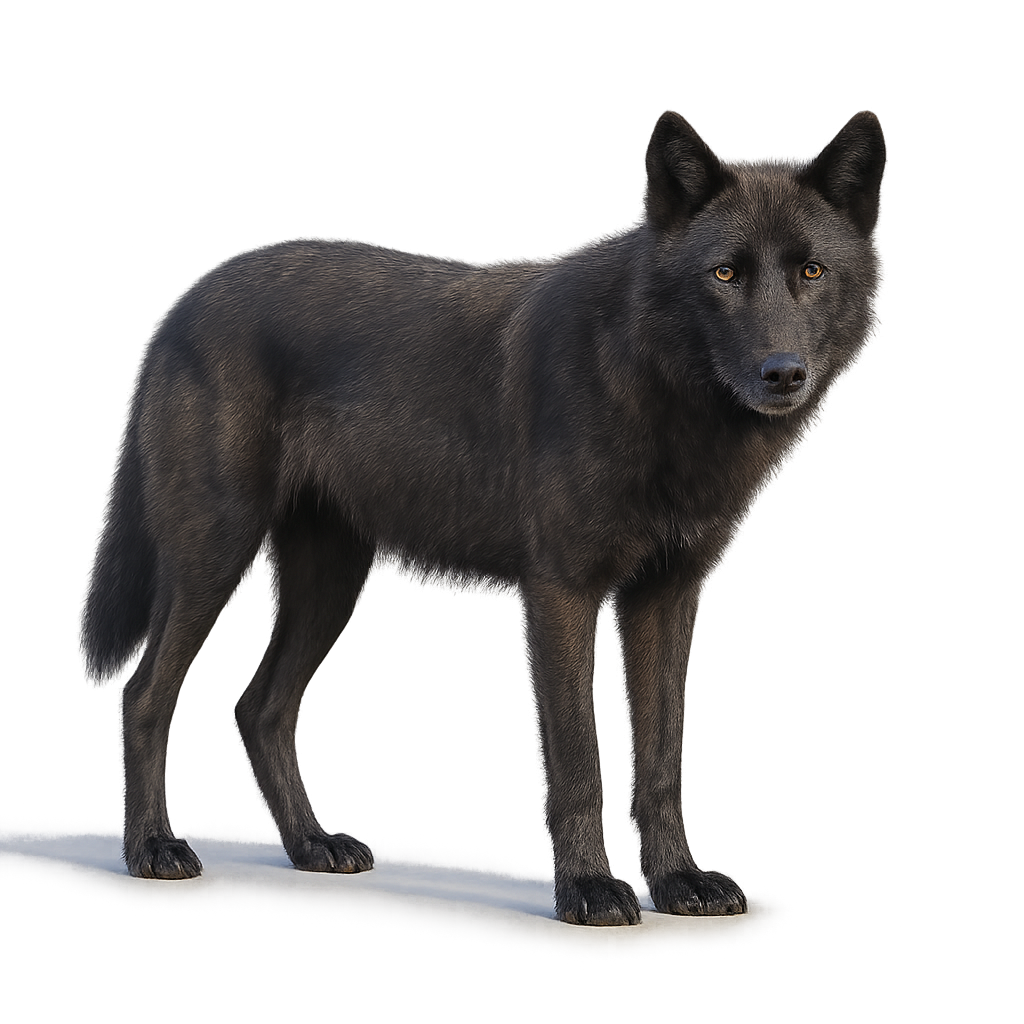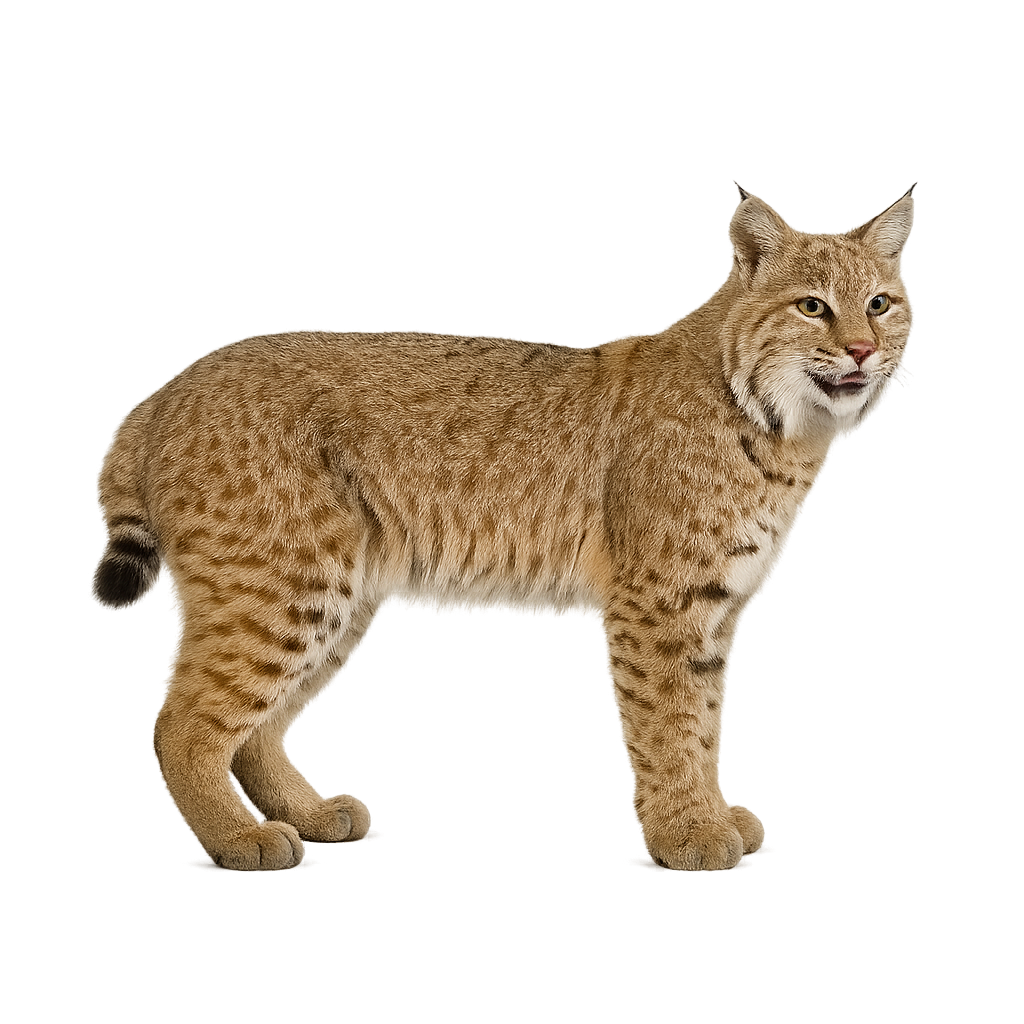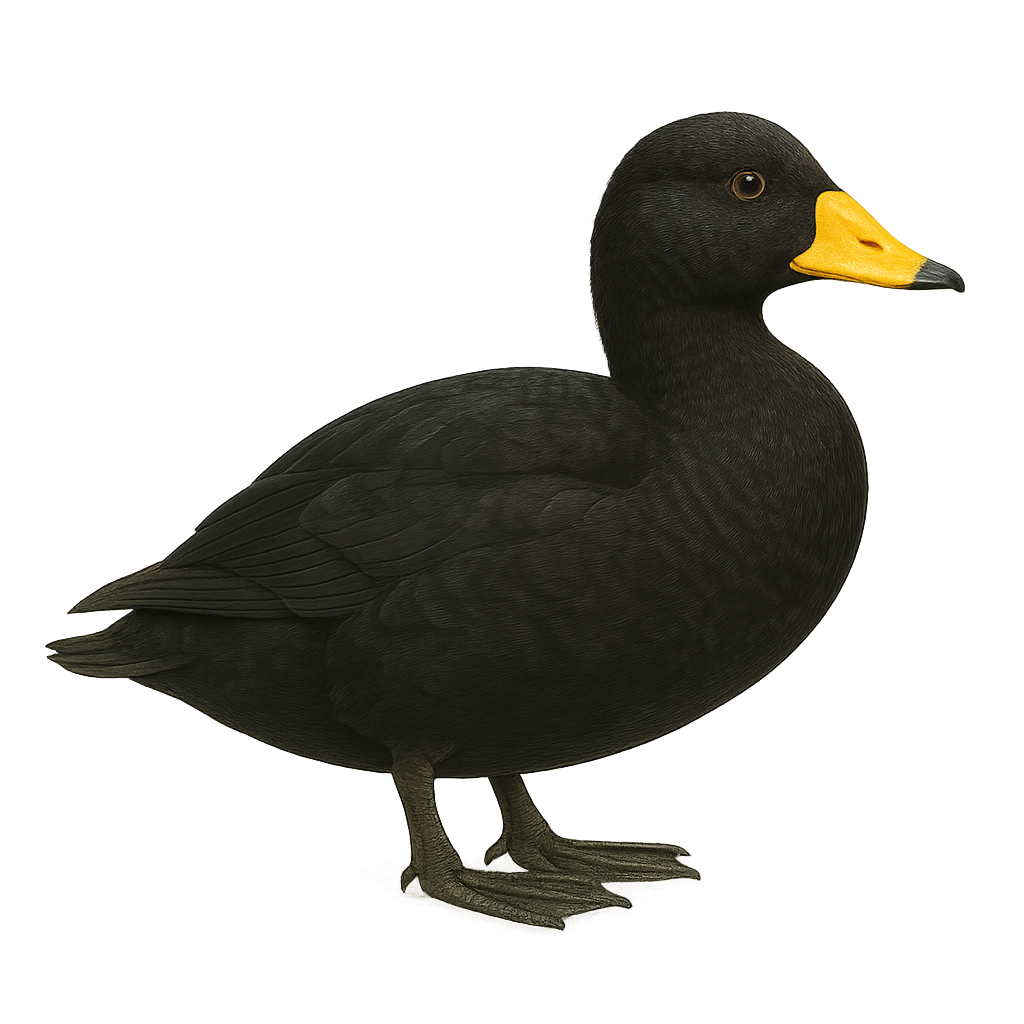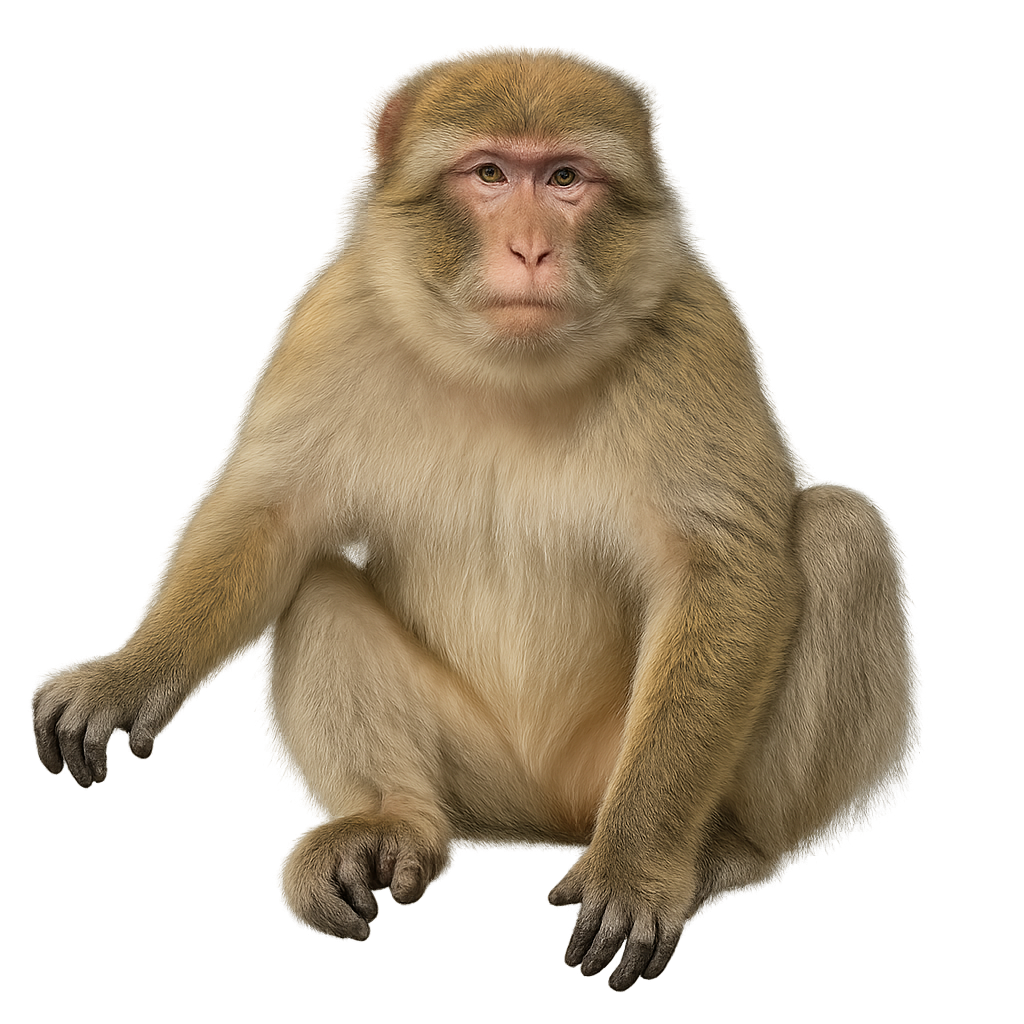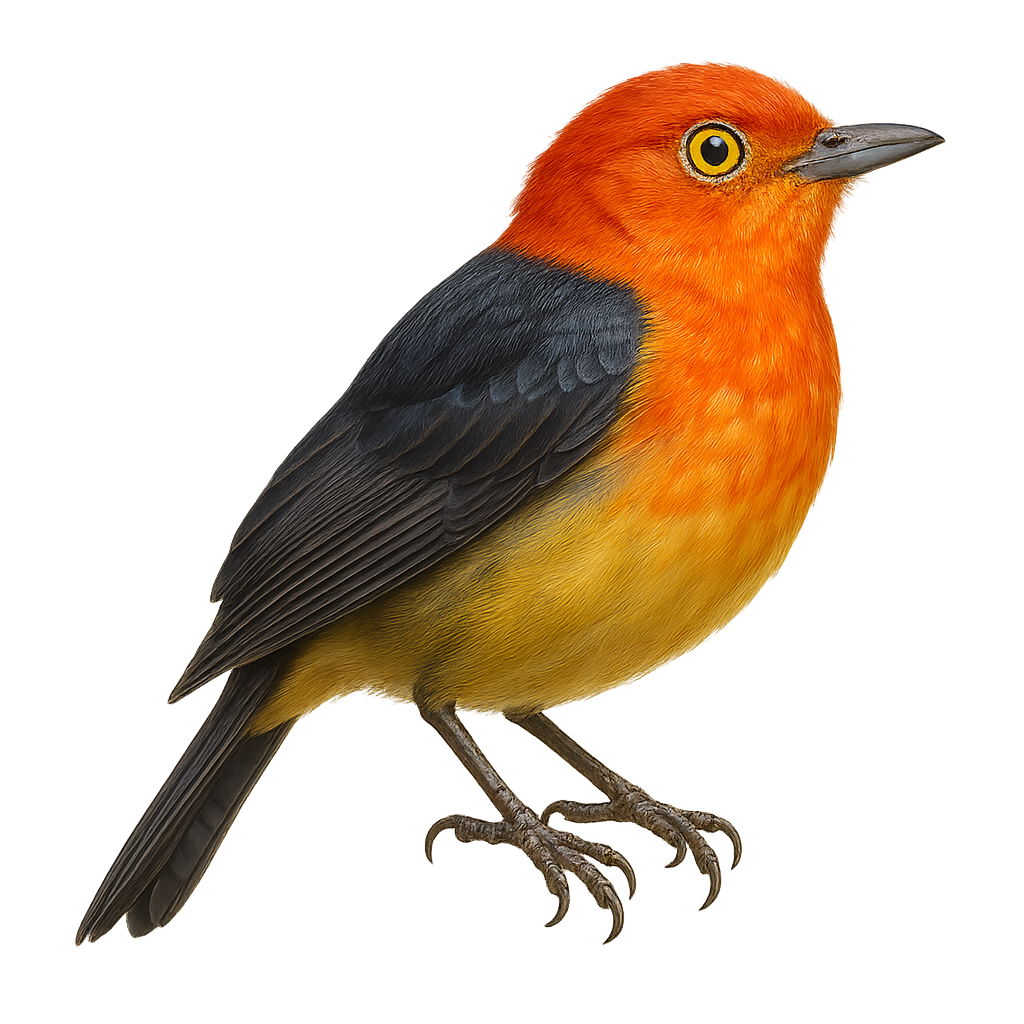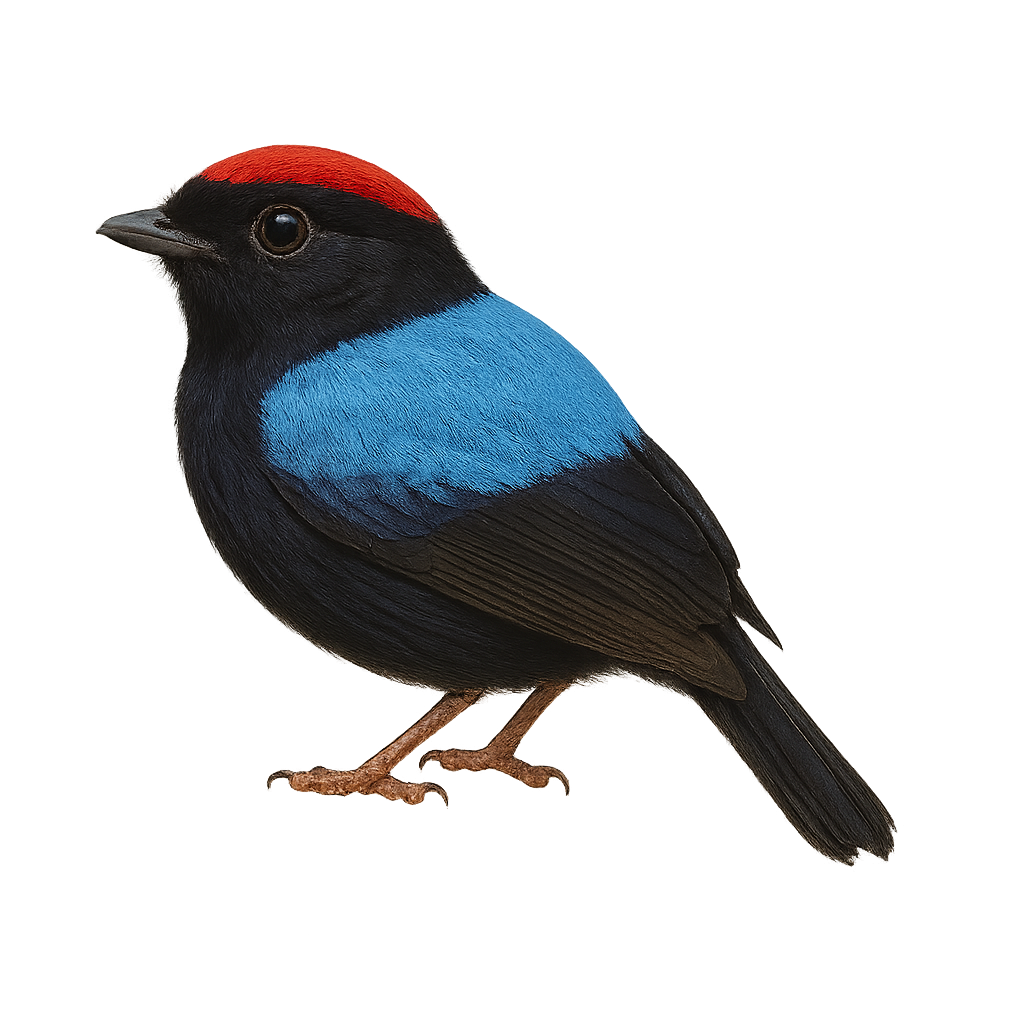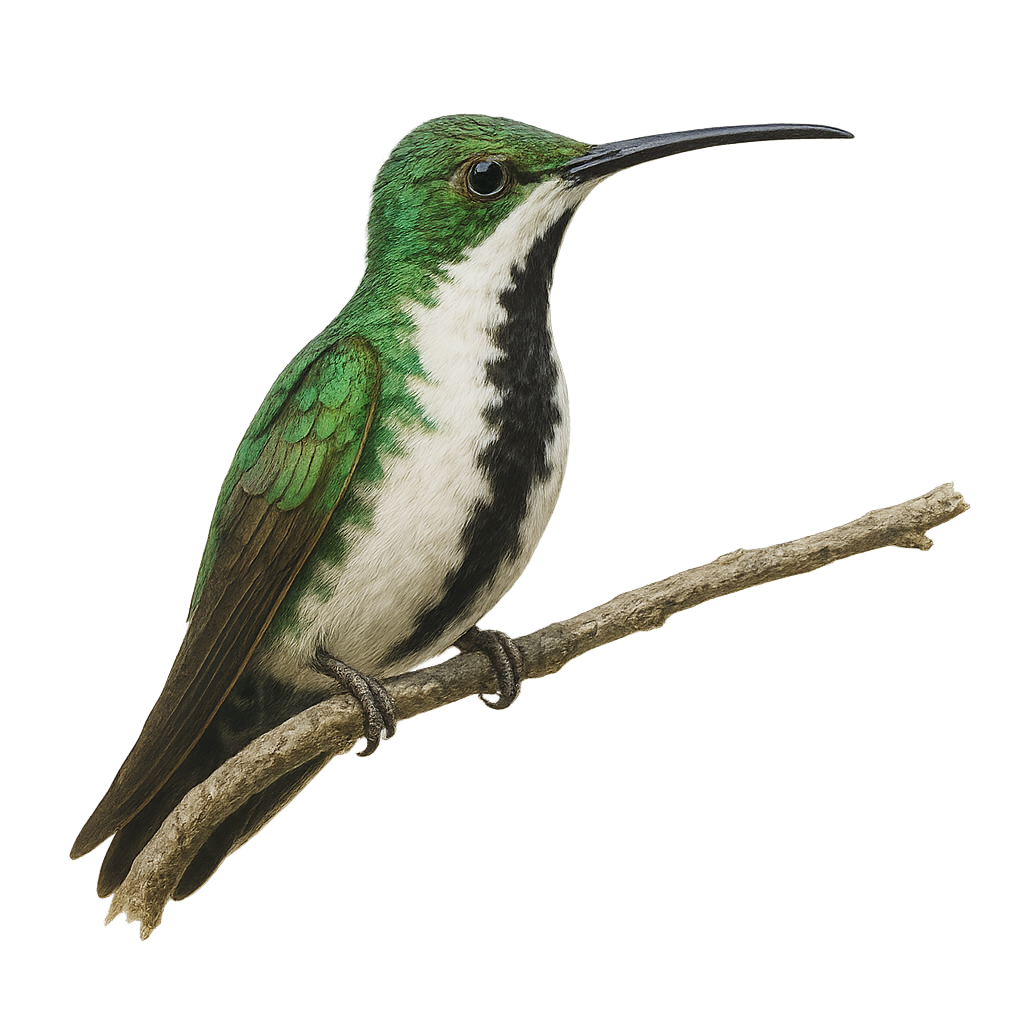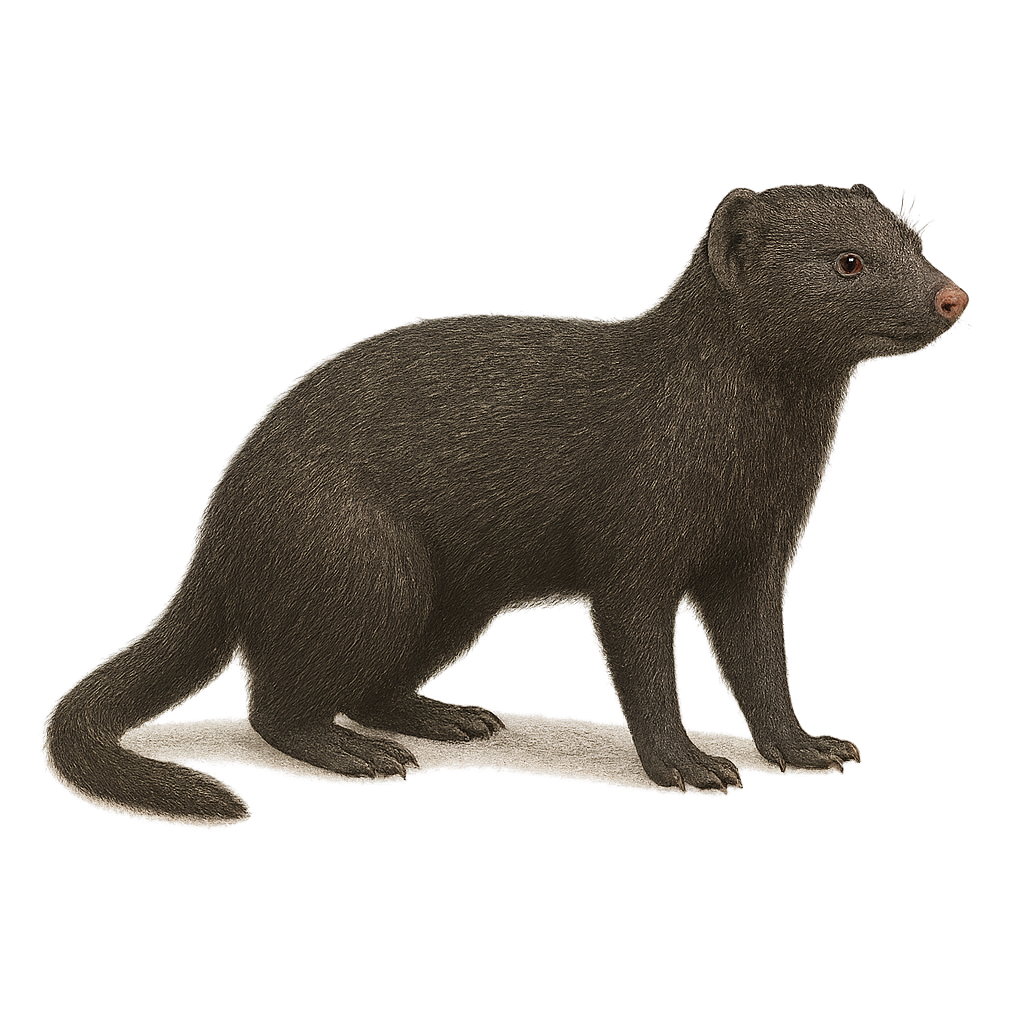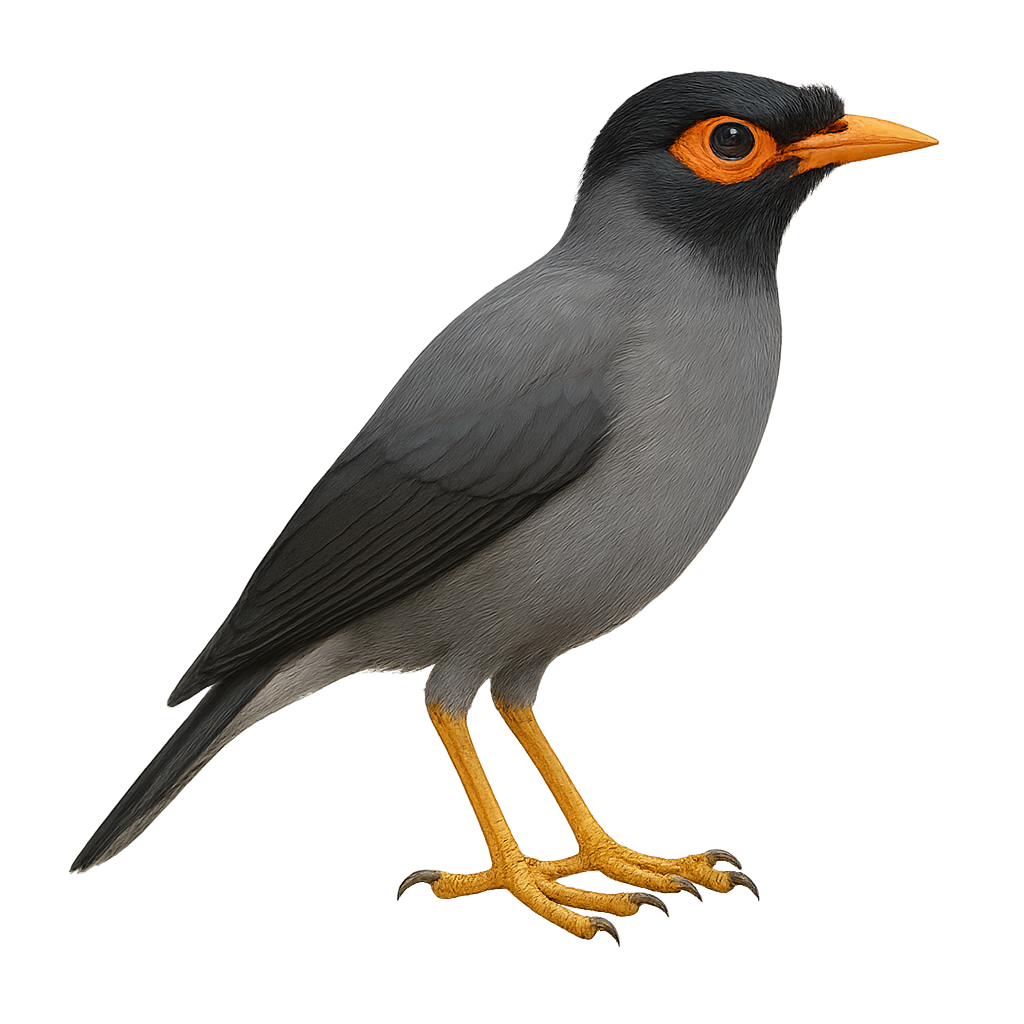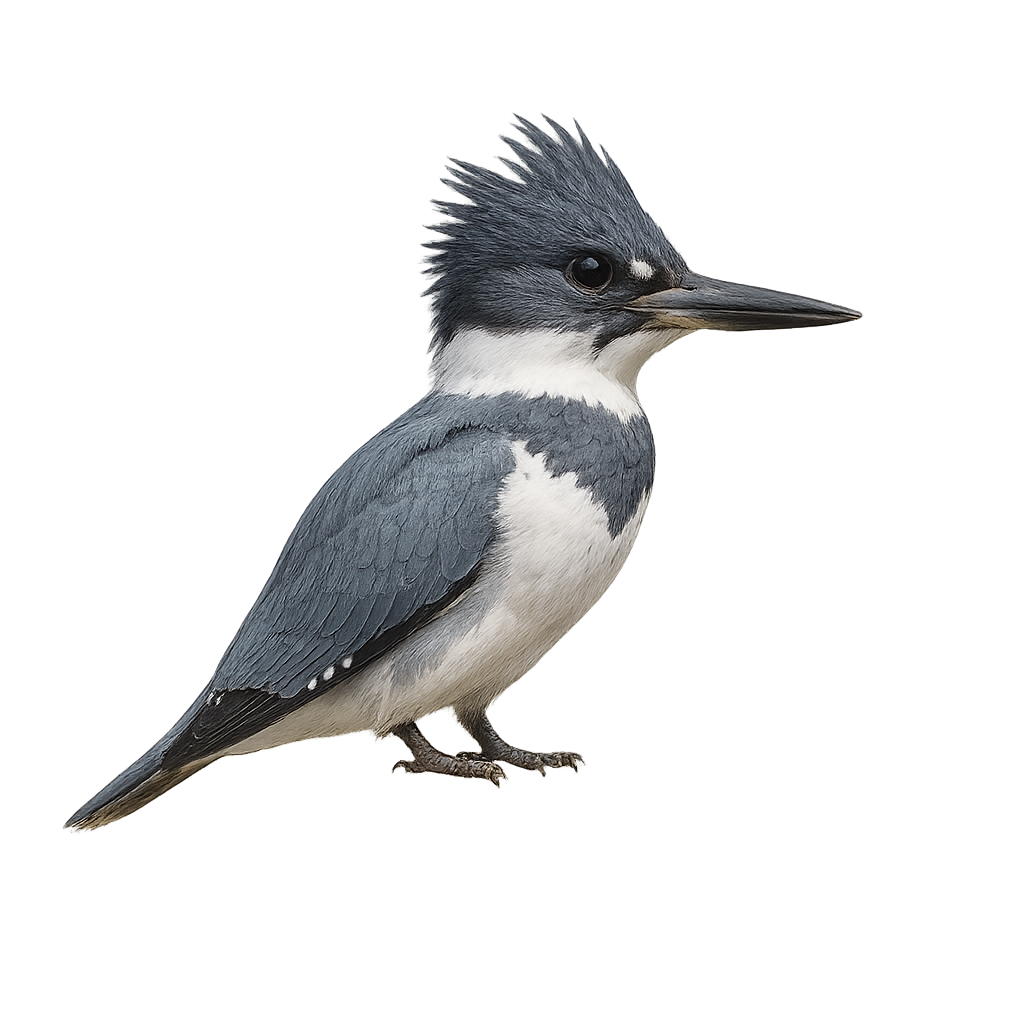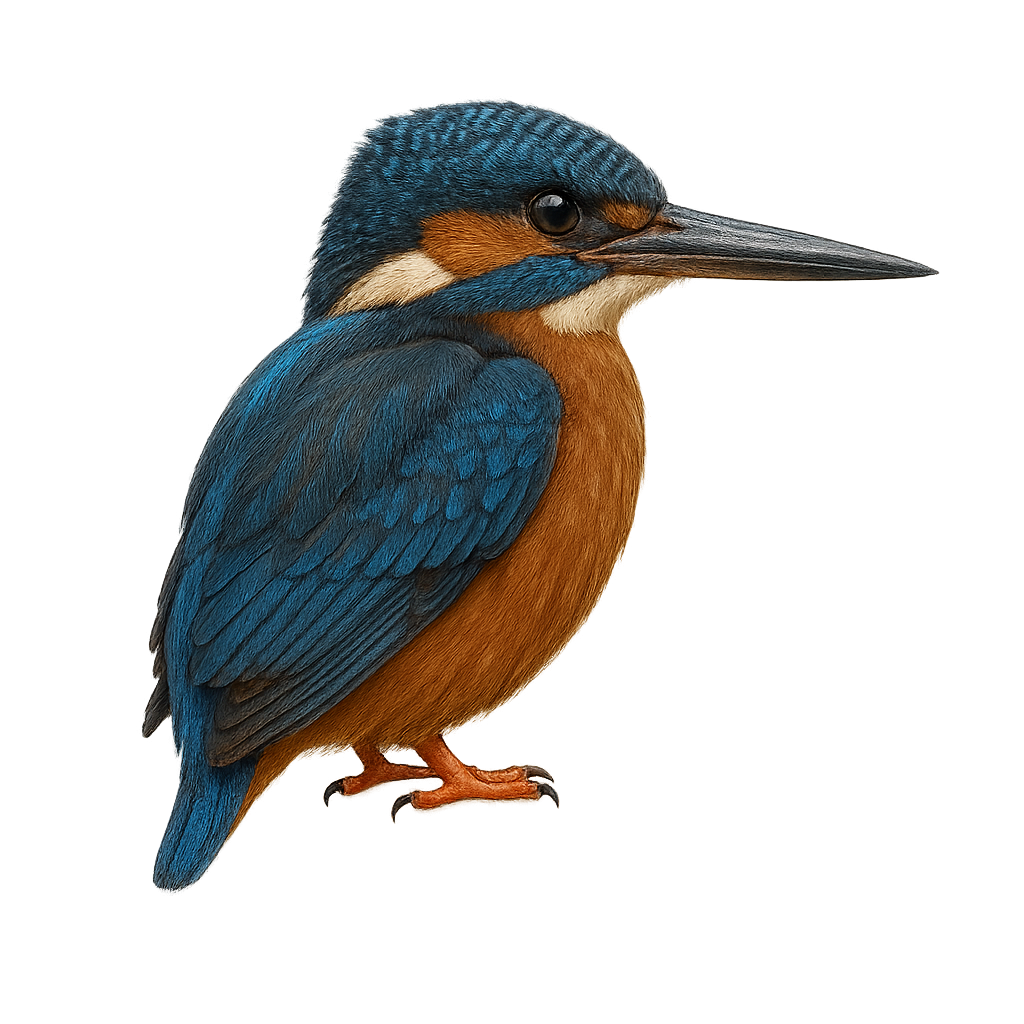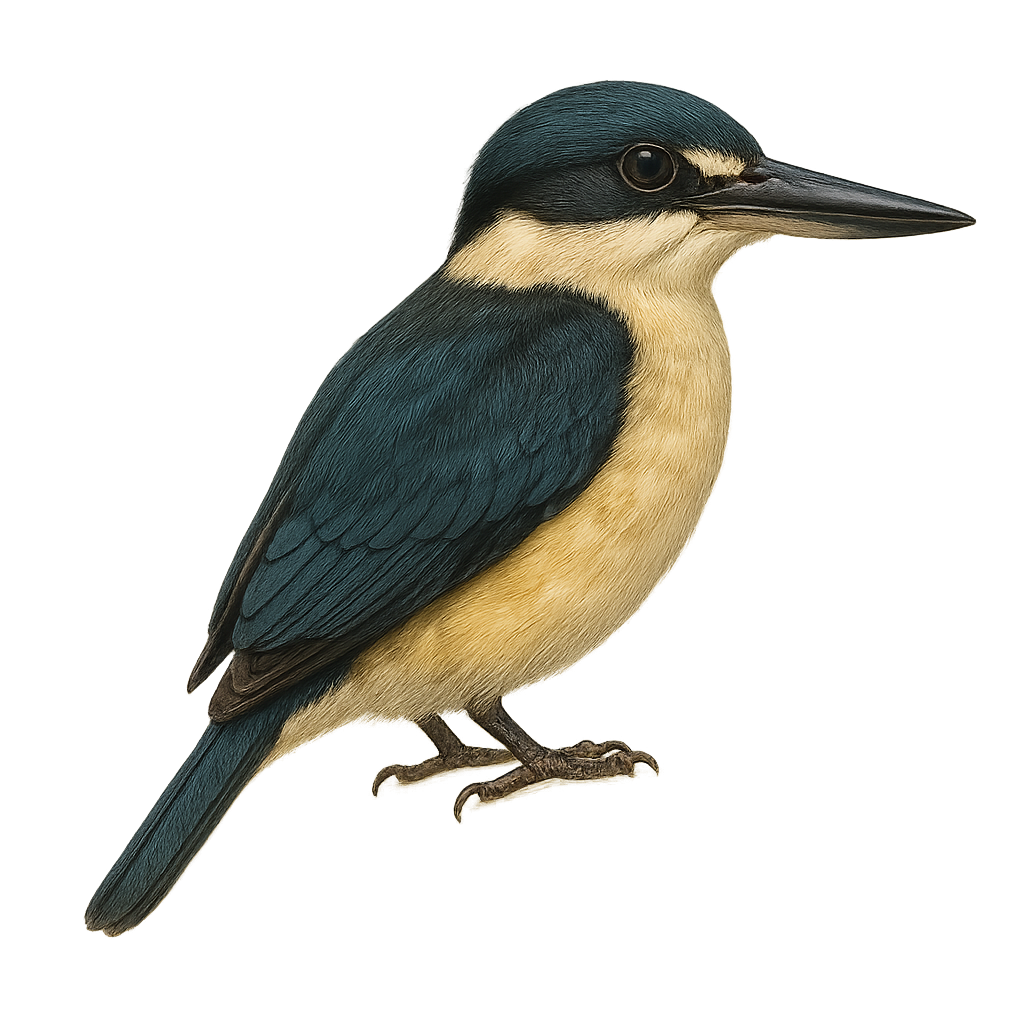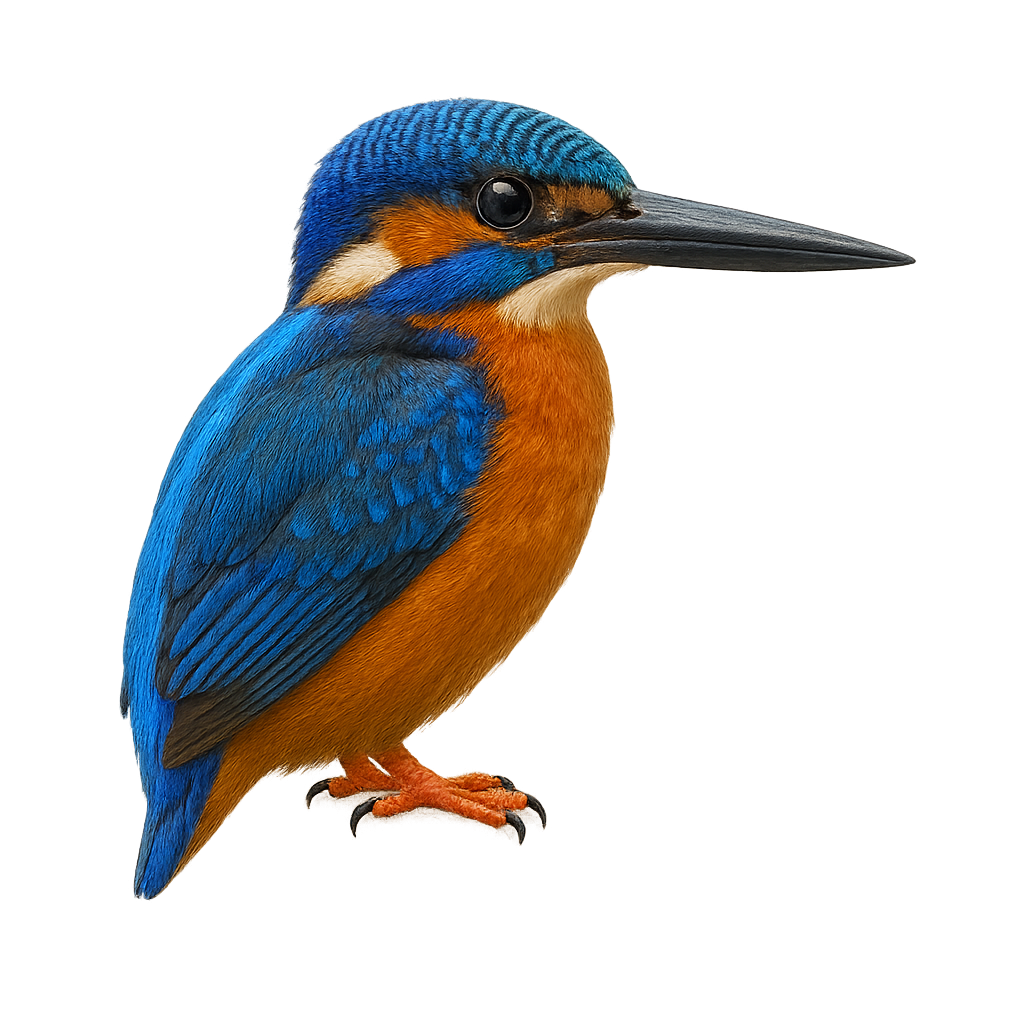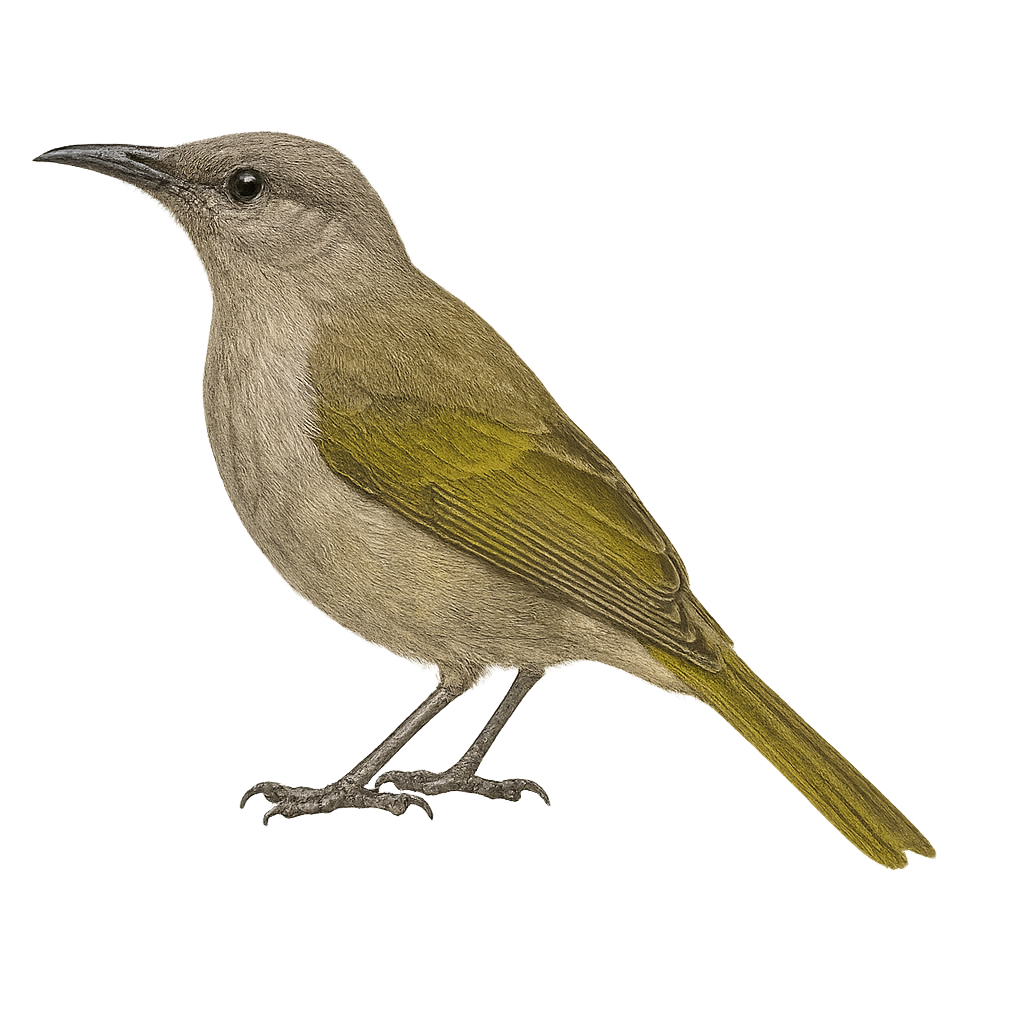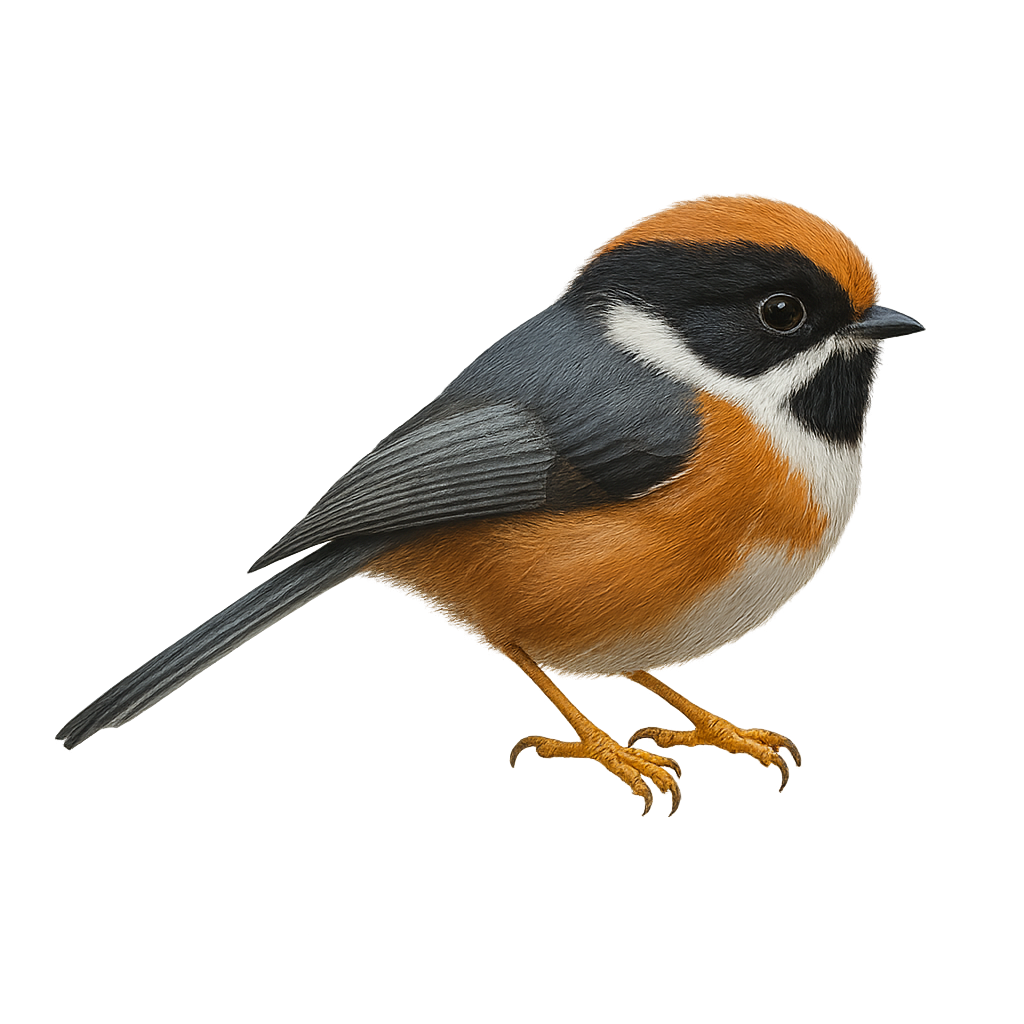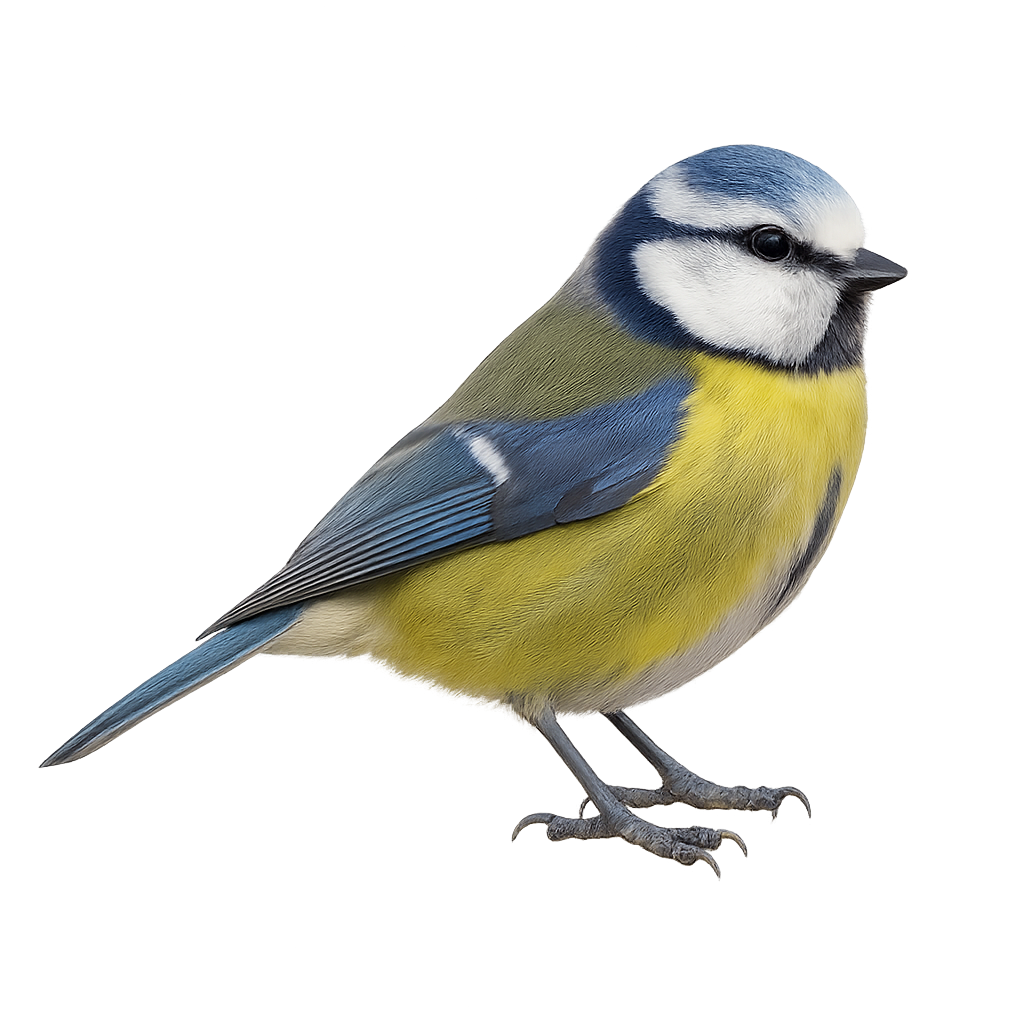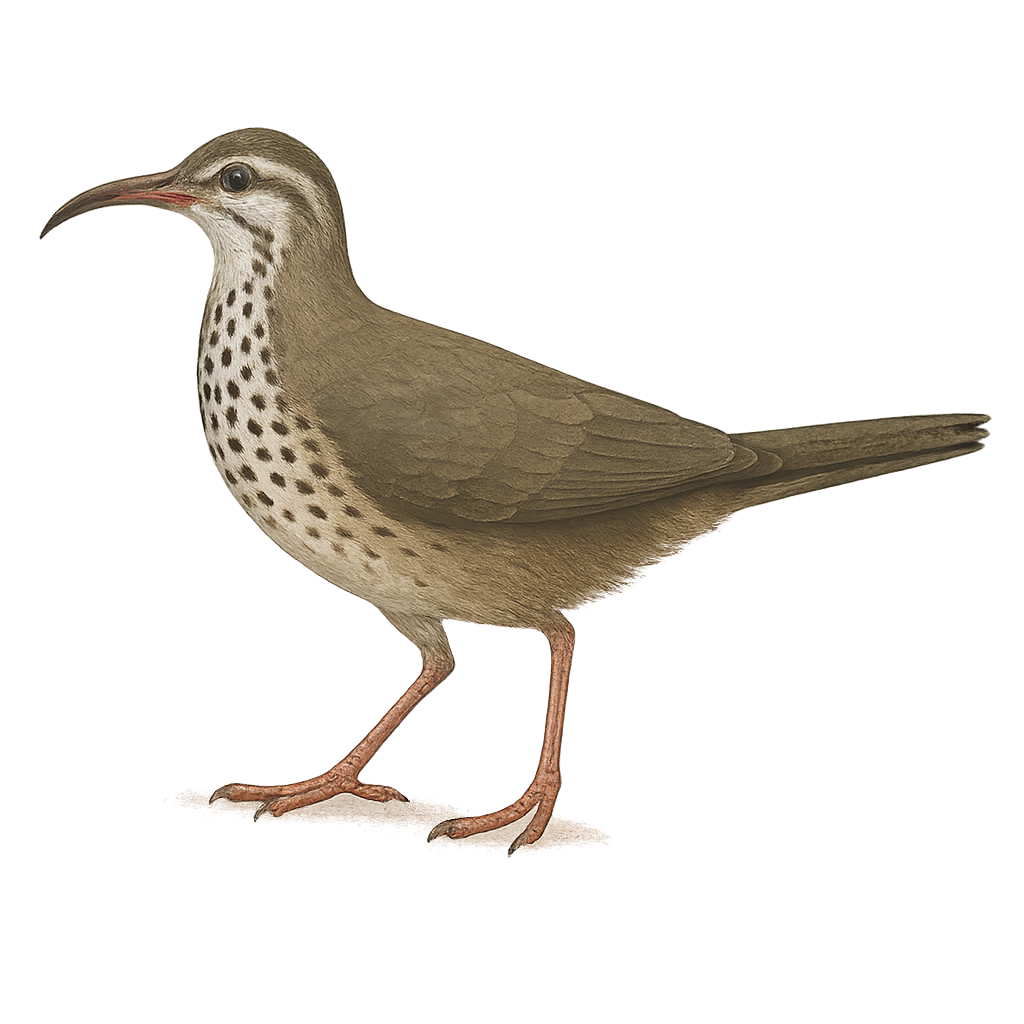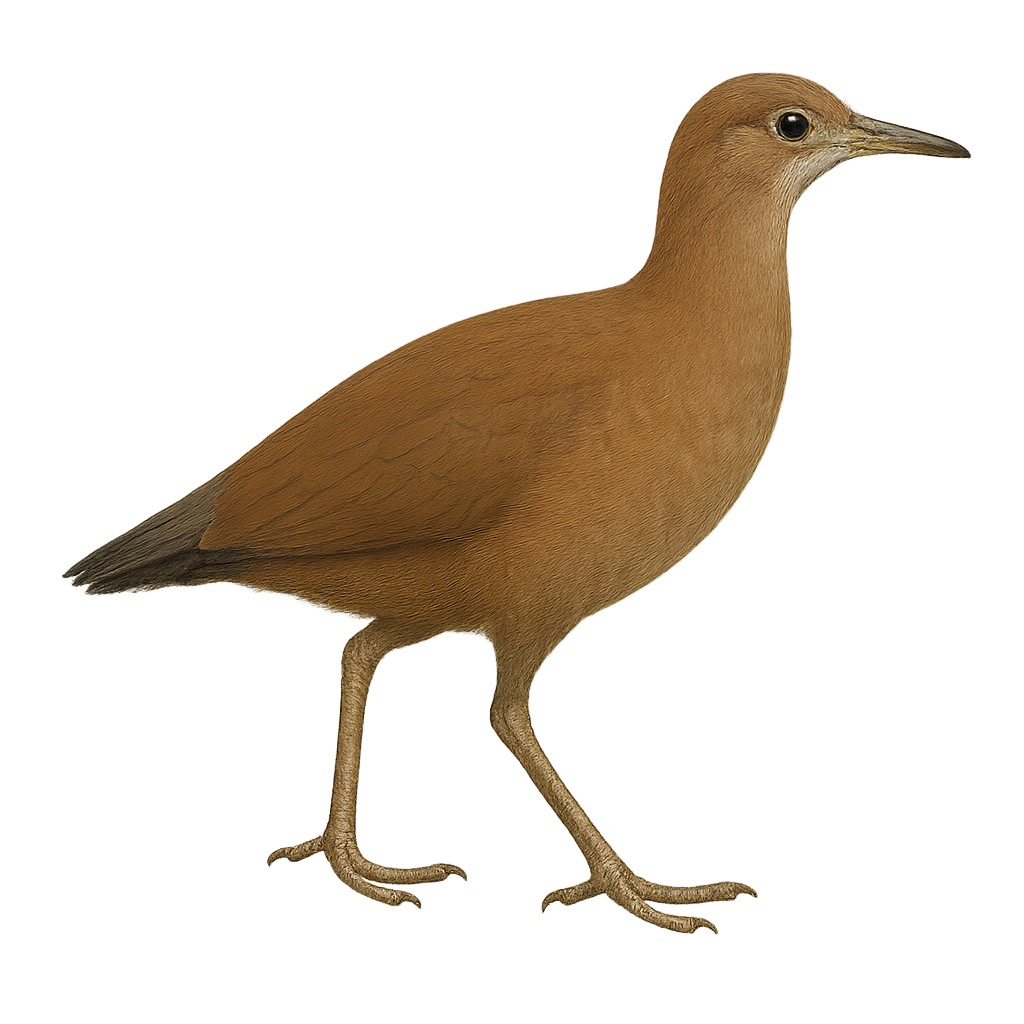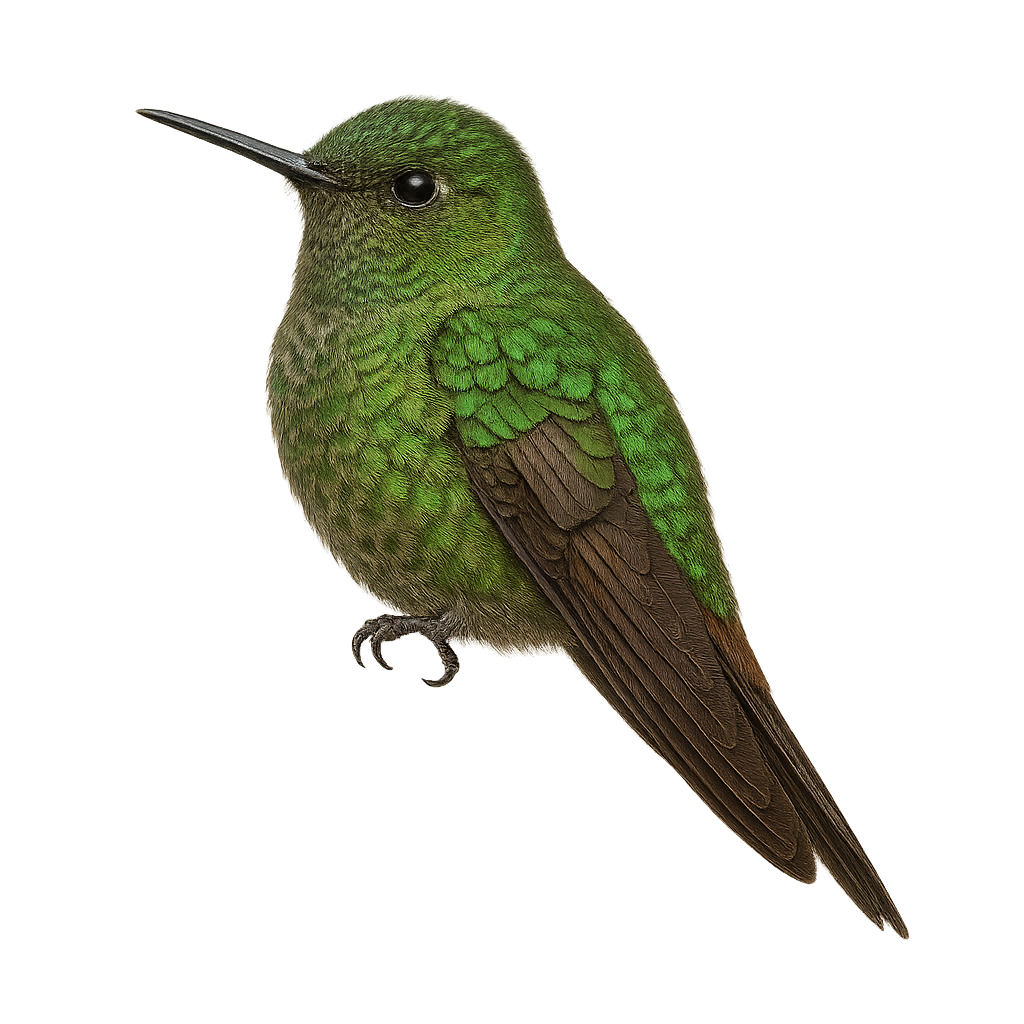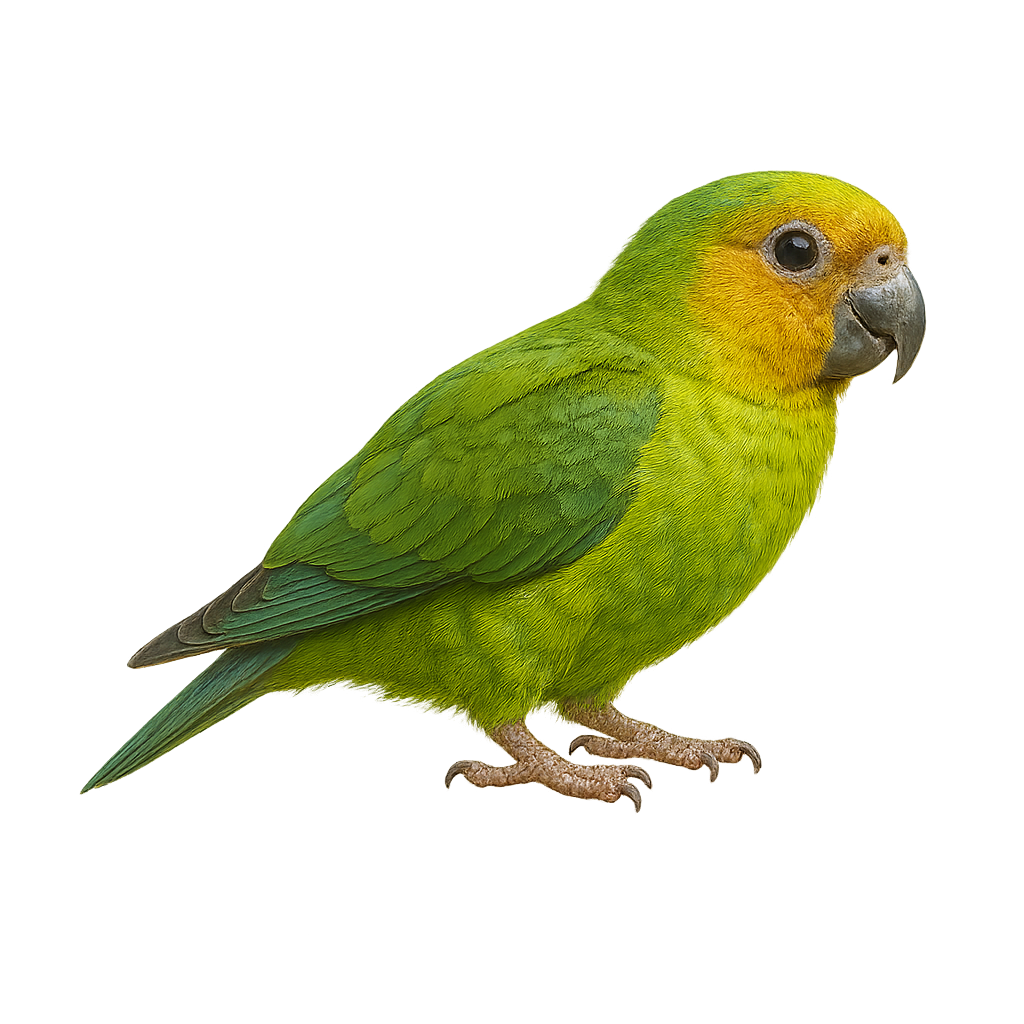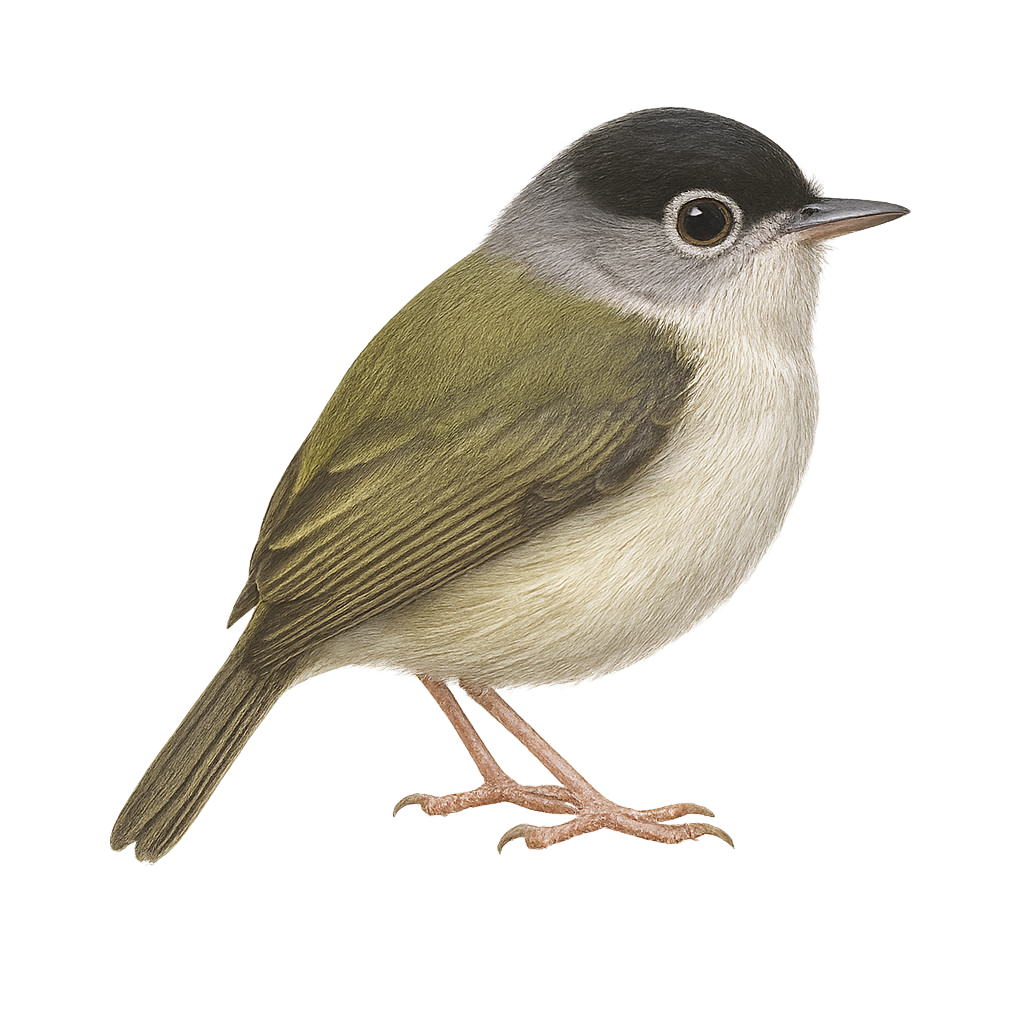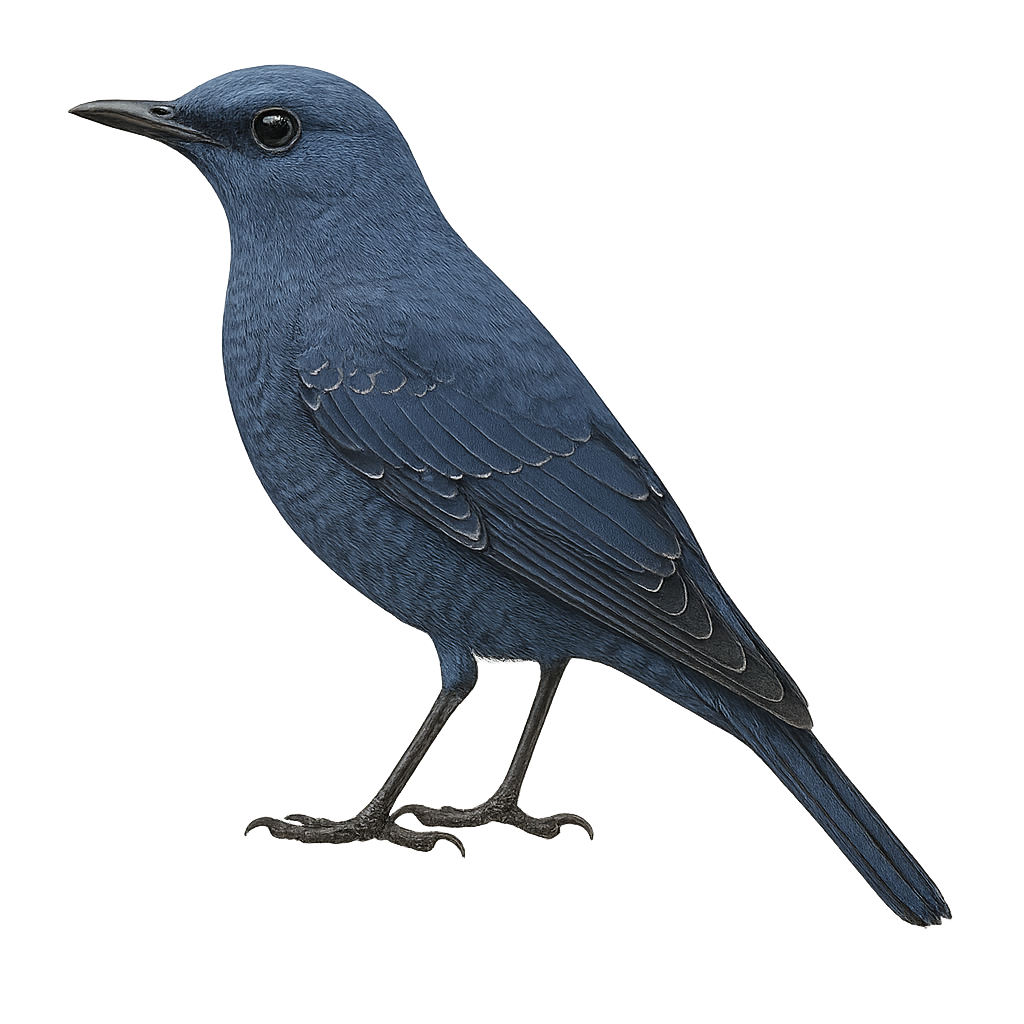The Balkan Green Lizard, Lacerta trilineata, is a striking reptile known for its size and vibrant coloration. It can grow up to 40 cm in length, including its tail. Typically green, with shades of brown or yellow, it features three lighter longitudinal stripes, giving it its name. Found mainly in the Balkans and parts of Greece, it favors open, sunny habitats like meadows, scrublands, and rocky areas. Diurnal by nature, it primarily feeds on insects and other small invertebrates. Although relatively common within its range, habitat destruction poses a threat to its population.
The Black-naped Oriole, or Oriolus chinensis, is a striking bird with bright yellow plumage, primarily yellow with black wings and tail. It is distinguished by a black patch on the nape, hence its English name. This bird is often seen in the tropical and subtropical forests of Asia, where it feeds mainly on fruits, insects, and small invertebrates. Its melodious and fluid song is a delight for birdwatchers. The Black-naped Oriole is a partial migratory bird, moving according to the seasons to find food resources. Although generally solitary, it can be observed in small groups during migration.
The Coastal Wolf is a subspecies of the gray wolf primarily found along the coasts of Alaska and the North Pacific, as well as on certain islands. This wolf is adapted to its coastal environment, where it primarily hunts marine prey such as seals, fish, and seabirds. It measures about 1.3 to 1.5 meters in length, with a tail of about 30 to 40 cm, and weighs between 30 and 50 kg. Its coat is typically gray, brown, or black, with lighter shades on the belly and a thick mane around the neck. The Coastal Wolf is a social predator that lives in family groups and hunts in packs, often in areas close to water or on beaches. In addition to marine prey, it may also feed on deer, bears, and small mammals. While this subspecies is less widespread than others, it is well adapted to its environment and plays an important role in maintaining the balance of coastal ecosystems. However, it is threatened by habitat loss, human disturbances, and hunting.
The Bobcat is a medium-sized cat native to North America, where it is widespread, particularly in the United States, Canada, and Mexico. It measures about 80 to 110 cm in length, with a short tail of 10 to 15 cm, and weighs between 8 and 14 kg, although some males can reach 20 kg. Its coat is typically tawny or grayish with dark spots, and it has black tufts of fur on its ears, a characteristic feature of this species. The Bobcat is an excellent solitary hunter, primarily feeding on hares, rabbits, as well as birds and small mammals. It is particularly known for its ability to hunt in a variety of environments, ranging from dense forests to more open regions. This predator uses its great stealth to approach its prey before launching a quick attack. While the Bobcat remains relatively stable in terms of population, it is threatened by habitat loss and illegal hunting in some areas.
The Black-faced macaque is a primate native to the islands of Sulawesi in Indonesia. It is recognizable by its distinctive black face and gray or brown fur. This macaque is primarily frugivorous but also feeds on insects and small animals. It lives in complex social groups, often near rivers and tropical forests. The species is threatened by deforestation and the loss of its natural habitat.
The Black Scoter, Melanitta americana, is a robust and elegant sea duck, recognizable by its black plumage in males and brown in females. The male features a bright orange bill with a distinctive black knob at the base, while the female has a duller plumage with shades of brown and gray. These birds are primarily found along the North American coasts, where they feed on mollusks, crustaceans, and small fish. They are often seen in large groups, floating on the water or diving for food. Their breeding habitat is in the Arctic and subarctic regions, where they nest near lakes and rivers.
The Barbary macaque is a large Old World monkey, measuring 55–75 cm in body length and weighing 10–18 kg, with greyish-brown fur and a paler crown. Endemic to the Atlas Mountains of Morocco and Algeria, it inhabits cedar forests, scrub and rocky slopes, feeding on fruits, leaves and insects. Social and matriarchal, it lives in family groups where males uniquely assist in infant care. During the breeding season (01.11-31.03), males display dominance through chest-posturing and vocal calls.
The Band-tailed Manakin, Pipra fasciicauda, is a small, colorful bird found in the tropical forests of South America. It is identifiable by its vibrant plumage, featuring shades of red, yellow, and black, and its distinctively barred tail. Males are particularly noted for their spectacular courtship displays, performing intricate dances to attract females. These birds primarily inhabit dense undergrowth, feeding on fruits and insects. Their range extends from southern Amazonia to northern Argentina. Although their population is stable, deforestation poses a potential threat to their natural habitat.
The Blue-backed Manakin, or Chiroxiphia pareola, is a small bird, measuring about 13 cm in length. It is easily recognizable by its striking plumage: the male sports a bright blue back contrasting with a black head and a red throat, while the female is more subdued with green hues. This bird is mainly found in the humid tropical forests of South America, particularly in Brazil, Guyana, and Venezuela. It is known for its spectacular courtship displays where several males perform synchronized dances to attract females. These displays are often accompanied by melodious songs. The Blue-backed Manakin primarily feeds on fruits and insects, playing an important role in seed dispersal.
The Black-throated Mango is a medium-sized hummingbird, easily recognizable by its black throat and metallic green plumage. Males have a distinctive black stripe running from the throat to the abdomen, while females feature a central white stripe bordered by black. It is primarily found in South America, inhabiting a range of environments from tropical forests to urban gardens. This hummingbird is an important pollinator, feeding mainly on nectar, but also consumes small insects to supplement its diet. Its rapid flight and agile movements make it a fascinating sight to behold.
The bushy-tailed mongoose, or Bdeogale crassicauda, is a small African carnivore belonging to the Herpestidae family. It is characterized by its bushy tail and grayish-brown fur. Primarily nocturnal, it feeds on insects, small vertebrates, and fruits. It inhabits tropical forests, savannas, and wooded areas in East Africa. Although elusive, it is sometimes seen in small family groups. Its ability to adapt to various habitats allows it to survive in changing environments. However, deforestation and habitat loss pose potential threats to its population.
The Bank Myna, or Acridotheres ginginianus, is a medium-sized bird belonging to the Sturnidae family. It is primarily found in the Indian subcontinent, where it frequents open areas, cultivated fields, and villages. Its plumage is generally gray with metallic sheen, and it features black patches on its head and wings. This bird is known for its sociability and adaptability to various environments, making it common in human-inhabited areas. The Bank Myna primarily feeds on insects, fruits, and seeds. It is often observed in groups, which helps it protect against predators.
The Belted Kingfisher is a medium-sized aquatic bird, easily recognized by its bright plumage and vivid colors. It measures about 28 cm in length and weighs between 100 and 150 g. Its back is a brilliant metallic blue, while its belly is white with orange patches on the chest. It has a long, straight, pointed bill, suited for catching fish and other aquatic prey. The Belted Kingfisher is an excellent diver, often perching on branches or electrical wires above the water before diving at high speed to catch its prey. It primarily lives in rivers, lakes, marshes, and coastal areas of North America, from southern Canada to Mexico. These birds are solitary and defend their territory by emitting sharp calls. While its population remains relatively stable, it is threatened by habitat loss due to water pollution and wetland destruction.
The Blyth's Kingfisher, or Alcedo hercules, is a remarkable bird primarily found in the mountainous regions of Southeast Asia. This kingfisher stands out due to its impressive size, reaching up to 25 cm in length, making it one of the largest in its genus. Its plumage is a striking blue on the back and wings, contrasting with an orange belly. It frequents fast-flowing streams and rivers bordered by dense forests, where it primarily hunts fish and aquatic insects. Its presence is often revealed by its sharp, piercing call. Although discreet, it is sometimes observed perched on a branch overlooking the water, patiently waiting for its prey.
The Bismarck Kingfisher, or Ceyx websteri, is a rare and fascinating bird endemic to the humid tropical forests of the Philippines. This small bird, measuring about 12 cm in length, is distinguished by its bright plumage with vivid blue and orange hues. It primarily inhabits wooded areas near water bodies, where it feeds on small fish and aquatic insects. Its discreet presence and shy behavior make it difficult to observe in its natural habitat. The Bismarck Kingfisher is currently classified as a vulnerable species due to deforestation and loss of its natural habitat. Conservation of this bird is crucial to maintaining the biodiversity of the Philippine forest ecosystems.
The Collared Kingfisher is a small colorful bird, measuring about 15 to 18 cm in length, and weighing between 20 and 30 g. It is distinguished by its head adorned with a characteristic crest made of bright blue feathers, and its brilliant plumage which combines shades of metallic blue and bright orange. Its back is cobalt blue and its belly is orange, with a striking contrast between the two. This kingfisher primarily inhabits wetlands in sub-Saharan Africa, often near rivers, marshes, and lakes, where it primarily hunts fish and aquatic insects. It is often seen diving from a perch to catch its prey, using its pointed and powerful bill to grab it with great precision. While it is generally a solitary bird, it can sometimes be seen in pairs during the breeding season. Although the population of the Collared Kingfisher is relatively stable, it faces threats such as habitat loss and water pollution.
The Blue-eared Kingfisher is a medium-sized bird, measuring about 16 to 18 cm in length. It is distinguished by its striking plumage, with bright blue shades on its back and wings, and an orange belly. Its long, pointed beak is perfect for catching fish, its main food source. It is primarily found in the humid tropical forests of Southeast Asia, near rivers and streams. This bird is often solitary and highly territorial. It is known for its spectacular hunting technique, diving swiftly into the water to catch its prey. Despite its beauty, it is often difficult to spot due to its discreet behavior and dense habitat.
The Brown Honeyeater, or Lichmera indistincta, is a small bird native to Australia and New Guinea. Its plumage is generally olive-brown with lighter underparts. This bird is particularly appreciated for its melodious and varied song. It inhabits a range of environments, from tropical forests to urban areas, and primarily feeds on nectar, although it also consumes insects and fruits. Its slender, curved bill is perfectly adapted for extracting nectar from flowers. The Brown Honeyeater plays a crucial role in the pollination of native plants. It is often seen in small groups but can also be solitary.
The Black-capped Chickadee is a small bird with distinctive plumage, featuring a black cap, white cheeks, and a grayish body. It is widely distributed across North America, inhabiting forests, parks, and gardens. Known for its curiosity and friendly behavior towards humans, this bird primarily feeds on insects, seeds, and berries, often observed storing food for winter. The Black-capped Chickadee is also famous for its characteristic "chick-a-dee-dee-dee" call. It symbolizes resilience, capable of surviving harsh winter conditions due to its fast metabolism and ability to enter torpor to conserve energy.
The Black-throated Bushtit, or Aegithalos concinnus, is a small bird with distinctive plumage, characterized by a black and white head, brown back, and long tail. It measures about 10 to 11 cm in length and weighs between 6 and 10 grams. It is primarily found in Asia, especially in deciduous forests and wooded areas. Known for its sociability, it tends to move in family groups. Its diet mainly consists of insects and small invertebrates, but it also consumes seeds and berries. The Black-throated Bushtit is an active and agile bird, often seen flitting between branches in search of food.
The blue tit is a small, colorful bird easily recognizable by its blue head, olive back, and bright yellow breast. It is found primarily in forests, gardens, and parks across Europe and Asia. The blue tit is a curious and active bird, often seen foraging for seeds, berries, and insects. It is also capable of using ingenious techniques to access food, making it a fascinating subject for photographers.
The boreal chickadee is a small passerine, 11–13 cm long, with olive-gray and brown plumage, featuring a dark brown cap, black bib, and white cheeks. It inhabits coniferous and mixed forests across the northern hemisphere, feeding on insects, seeds, and berries gleaned while clinging to branches. During the breeding season, pairs excavate or occupy tree cavities to nest, and the male feeds the female at the nest.
The Bensch's Monias, or Monias benschi, is a rare and intriguing bird endemic to Madagascar. It features a dull brown plumage that allows it to blend seamlessly into its natural habitat of dry forests and scrublands. This ground-dwelling bird is known for its elusive behavior and ability to move swiftly on the ground. It primarily feeds on insects and small invertebrates by foraging on the forest floor. The Bensch's Monias is monogamous, forming stable pairs. Its population is declining due to deforestation and habitat degradation, making it a vulnerable species in need of increased conservation efforts.
The Brown Mesite is an endemic bird of Madagascar, belonging to the Mesitornithidae family. This small terrestrial bird is recognizable by its uniform brown plumage, which allows it to blend into its natural habitat. It measures about 30 cm in length and has strong legs adapted for walking. The Brown Mesite is primarily insectivorous, feeding on insects and small invertebrates found by foraging on the forest floor. It is often seen in small family groups. This bird is threatened by deforestation and habitat fragmentation, leading to a decline in its population. It is currently classified as vulnerable by the IUCN.
The Bronzy Inca, or Metallura aeneocauda, is a small hummingbird native to the Andes. It is distinguished by its iridescent plumage, featuring shades of green and bronze, and its distinctive long tail. This hummingbird primarily inhabits humid montane forests and shrublands at high altitudes. It feeds mainly on nectar, which it gathers by flying from flower to flower, but it also consumes small insects to supplement its diet. Its rapid and agile flight allows it to navigate easily through its rugged habitat. Although generally solitary, it can be seen in small groups during the abundant flowering of certain plants.
The Chalcostigma herrani, or Bronze-tailed Thornbill, is a fascinating small hummingbird endemic to the Andes. It is distinguished by its iridescent plumage, with a bronze-colored tail that gives it a particular shine. This hummingbird measures about 10 cm in length and weighs between 4 and 5 grams. Its thin, slightly curved beak is perfectly adapted to collecting nectar, its main food source. It frequents high-altitude areas, often above 2500 meters, where it feeds on Andean flowers. Although not very shy, it remains vigilant against predators. Its ability to hover and make rapid movements makes it a captivating sight for nature observers.
The Buff-faced Pygmy Parrot, or Micropsitta pusio, is the smallest parrot in the world, measuring about 8 to 9 cm in length. It is primarily green with a distinctive yellow face and blue markings on the wings. This parrot inhabits the tropical rainforests of New Guinea and surrounding islands. It feeds mainly on lichens, mosses, and fungi found on tree trunks. Its behavior is discreet, making it difficult to observe in its natural habitat. It lives in small groups and uses tree cavities for nesting. Its small size and green plumage provide excellent camouflage in the dense canopy.
The Black-capped Pygmy-Tyrant, Myiornis atricapillus, is a tiny bird from the Tyrannidae family. It is one of the smallest birds in the world, measuring only about 6.5 cm in length. Its head is black, contrasting with a white belly and olive-gray back. It primarily inhabits the humid tropical forests of Central and South America, feeding on insects caught in flight. Its song is subtle, often hard to distinguish among the forest sounds. Despite its small size, it is an agile and fast predator. It is usually seen alone or in pairs, rarely in groups.
The Black Kite is a large bird of prey, measuring about 55 to 60 cm in length, with a wingspan of 150 to 160 cm and weighing between 800 g and 1.5 kg. It is distinguished by its predominantly black plumage with gray and brown shades, and a lighter head, often silvery-gray. This raptor has long, pointed wings, ideal for soaring and maneuvering in the air. The Black Kite is primarily found in Europe, but its range also extends to North Africa and the Middle East. It primarily inhabits open areas such as countryside, sparse forests, and riverbanks, where it feeds on small mammals, birds, reptiles, and also carrion. The Black Kite is an excellent glider, using thermal currents to stay aloft with minimal effort. This bird is also known for its social behavior and can be seen in groups, especially during migration. Although it is not in immediate danger, it faces threats such as habitat loss, poisoning, and collisions with power lines.
The Blue Rock Thrush, Monticola solitarius, is a medium-sized bird, measuring about 21 to 23 cm in length. It is easily recognizable by its bright blue plumage in males, while females display more brownish tones. This bird is often seen perched on rocks or cliffs, from where it surveys its territory. It primarily feeds on insects and small invertebrates but also enjoys berries. The Blue Rock Thrush is a partial migrant, found in southern Europe, North Africa, and parts of Asia. It prefers rocky and mountainous habitats, often near water. Its melodious and flute-like song is a delight for birdwatchers.


